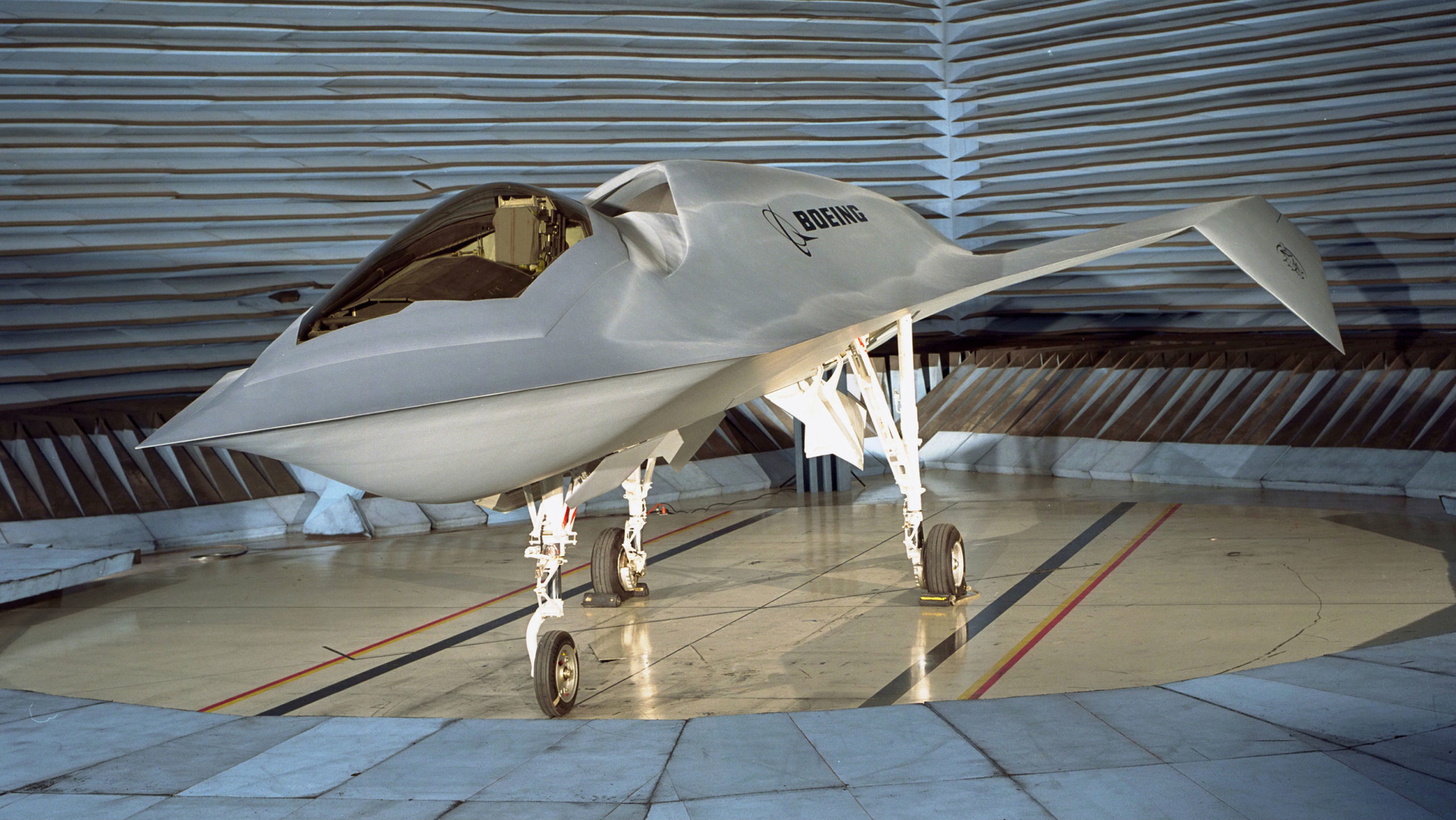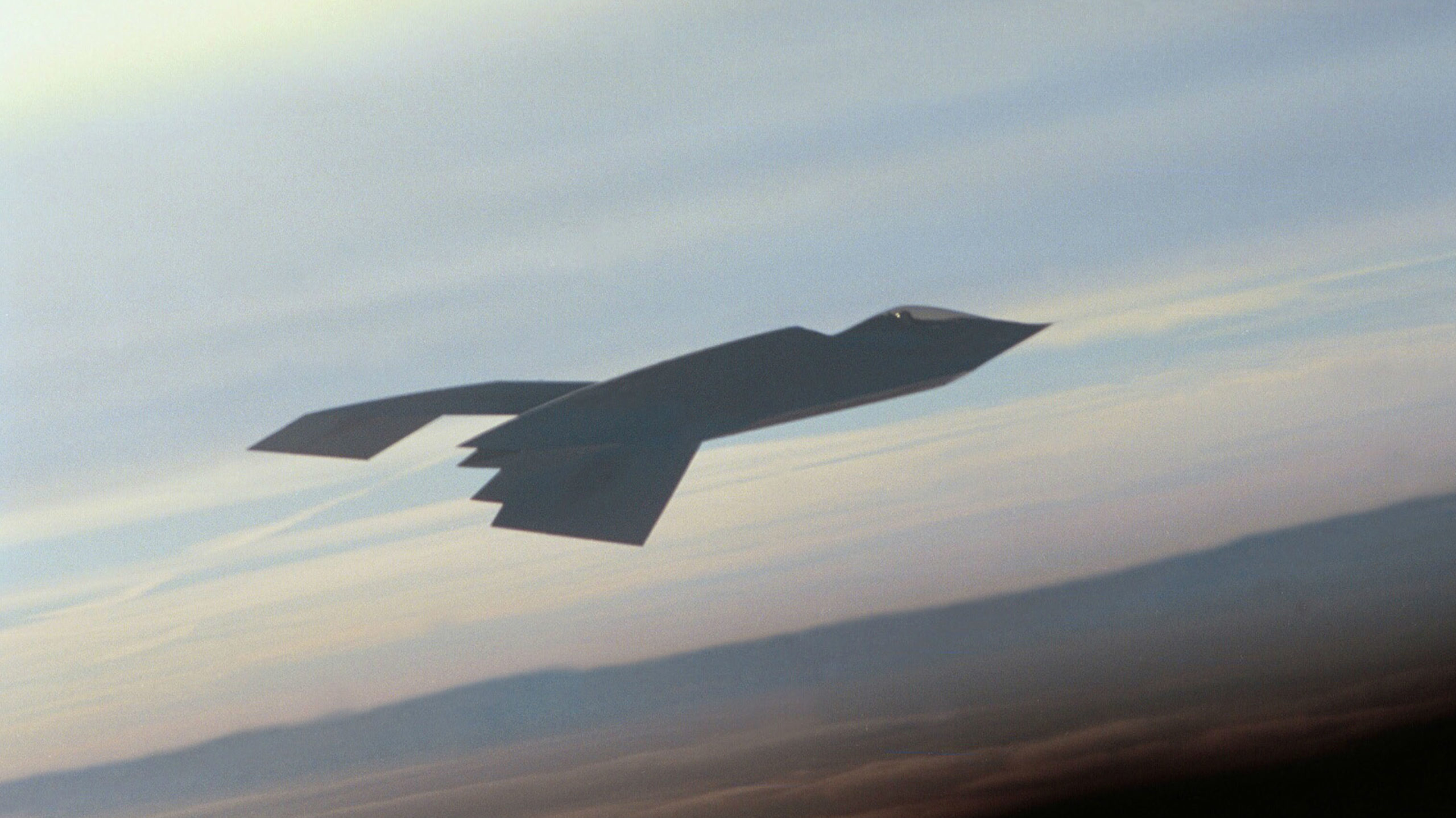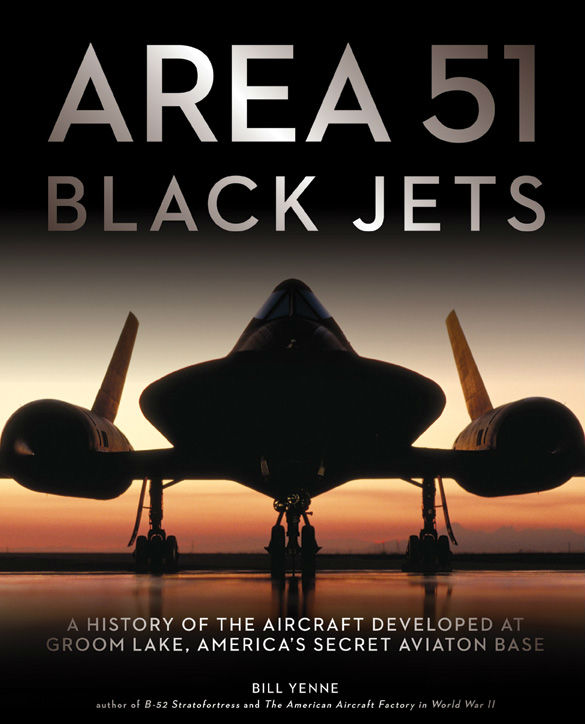From the U-2 Dragon Lady and A-12 Oxcart, to the SR-71 Blackbird and D-12 Ramjet Drone, there’s been no shortage of exotic aircraft (and UFO sightings) in the skies over Nevada’s Area 51. But among the most extreme examples of bleeding-edge avionic design tested was the otherworldly Boeing Bird of Prey.
One of the most intriguing products of the Phantom Works that really was a denizen of Area 51 on George Muellner’s watch was the Bird of Prey. Visually, this aircraft possessed the strange, but sleek design characteristics that are appreciated by those in the world of extraterrestrial buffs. It was even named after an alien spaceship. According to James Wallace, writing in the Seattle Post-Intelligencer of 18 October 2002, it is named for a class of Klingon starships first seen in the 1984 motion picture Star Trek III: The Search for Spock.
The Bird of Prey project began at the Phantom Works in 1992, and the aircraft made its first flight eight months earlier than the X-36 on September 11, 1996. Unlike the publicly acknowledged NASA X-36, the Bird of Prey was a classified program, funded by the contractor but apparently managed by the US Air Force. Like Tacit Blue, it was successfully obscured from public view until its flight test program concluded in April 1999 after 40 successful flights.
The Bird of Prey program, like many of the projects that have come out of the Phantom Works, utilised rapid prototyping techniques to cut both costs and development time. According to the company, the program “pioneered breakthrough low-observable technologies and revolutionised aircraft design, development and production”. The Bird of Prey was also one of the first aircraft programs to “initiate the use of large, single-piece composite structures; low-cost, disposable tooling; and 3D virtual reality design and assembly processes to ensure the aircraft was affordable to build as well as high-performing.”

The aircraft was not, however, one to push the edge of the performance envelope. The Bird of Prey had a reported cruising speed of 480km/h and a modest service ceiling of 20,000 feet (6000m). The aircraft was 14m long and had a wingspan of about 7m. It weighed about 3356kg and was powered by an off-the-shelf Pratt & Whitney JT15D-5C turbofan engine.
The man who is considered to have been the “father of the Bird of Prey” was Alan Wiechman, the director of signature design and applications for the Phantom Works whose career in LO design had begun at the Lockheed Skunk Works where he worked on Have Blue and the F-117 program, as well as the Sea Shadow, Lockheed’s stealth warship.
In April 2002, six months before the Bird of Prey was officially declassified, Wiechman received the 2001 Technical Achievement Award from the National Defence Industrial Association (NDIA) for his work in LO aircraft design. The
NDIA called him “a giant whose work to date has given the United States a legacy of improved survivability and influenced an entire generation of combat vehicles,” adding that “because of Wiechman’s work, the United States gained a 15-year lead over potential adversaries that it has not relinquished, and the effectiveness of his designs and products has been thoroughly proven in combat operations.”

On 18 October 2002, the Bird of Prey was made public. According to Boeing, the reason was that “the technologies and capabilities developed [in the program] have become industry standards, and it is no longer necessary to conceal the aircraft’s existence.”
Jim Albaugh, president of Boeing Integrated Defense Systems, proudly bragged that with the Bird of Prey, the Phantom Works “changed the rules on how to design and build an aircraft.”

George Muellner, a man with two decades of experience in black world aeroplanes and now an executive with Integrated Defencs Systems, added that the Bird of Prey program “is one of many that we are using to define the future of aerospace.”
The fact that Boeing itself funded the project to the tune of $US67 million hints that “the future of aerospace” involves secrets more intriguing than the Bird of Prey that have been in the sky over Area 51 since before 2002.
They may be revealed tomorrow, or they may remain mysteries indefinitely.
Area 51 – Black Jets: A History of the Aircraft Developed at Groom Lake, America’s Secret Aviation Base by Bill Yenne is available from Amazon.

